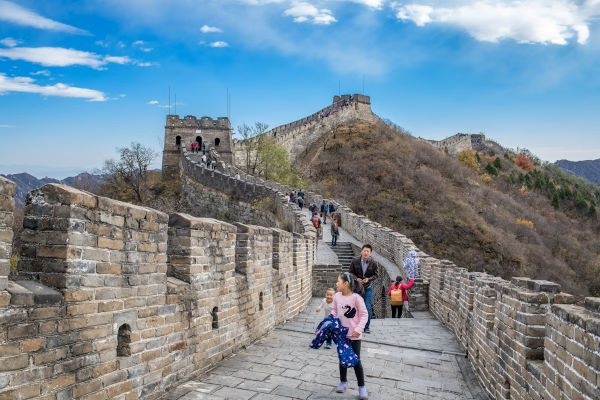The Great Wall of China, a legendary border defense system that once spanned mountains, grasslands, and deserts, served as a fortification garrisoned by soldiers throughout China’s history. Today, it is a UNESCO World Heritage site, partly restored, and in a state of picturesque ruin, with only a small portion open to tourists.
History of the Great Wall of China
The Great Wall of China, long a subject of fascination since Western travelers first described it in the 16th century, is a collection of border defense structures built over centuries. Together, they reflect the ongoing conflict between settled Chinese civilizations and nomadic tribes like the Xiongnu and Mongols.

Length of the Great Wall
The Great Wall of China stretches an impressive 13,170 miles, spanning 15 provinces from Shanghai Pass to Gansu and Inner Mongolia. It covers 23 degrees of longitude, with the sun taking nearly two hours to set from its eastern tip near the Korean border to its far-western end along the old Silk Road.

How was the Great Wall used? During the Ming Dynasty, nearly a million soldiers manned the Great Wall, using advanced weapons like crossbows, cannons, and landmines to defend against Mongol invasions. The Wall also featured a beacon system to send signals using smoke. However, despite their defenses, the Ming were eventually defeated by the Manchu, who captured Beijing and established the Qing Dynasty. The era of massive wall construction ended, and the Wall fell into ruin, its structures left vulnerable to scavengers.
Tips for visiting the Great Wall of China
The Great Wall of China offers a variety of experiences across different sections. Popular and accessible areas like Badaling and Mutianyu near Beijing are well-preserved with restored paths and cable cars, while Jinshanling and Simatai offer rugged, less-crowded hiking experiences. Shanhai Pass, where the Wall meets the sea, blends natural beauty and history. Other notable destinations, listed from east to west, include Shanhaiguan, Jiumenkou, Tianjin, Simatai, Badaling, and Jiayuguan Fort, each offering unique features and historical significance.
To start your Great Wall trip, it's easiest to visit Badaling or Mutianyu from Beijing, with Badaling being closer and Mutianyu less crowded. For remote sections like Simatai or Jiankou, group tours are recommended. The Wall spans over 13,000 miles, offering easy walks at Badaling and Mutianyu, and more challenging hikes at Jinshanling and Simatai.
Guided tours, including day hikes and multi-day trips, are available through companies like Beijing Hikers. The best times to visit are spring and autumn, though winter is less crowded. Nearby villages offer cultural experiences, and you can stay at campsites or nearby accommodations.
Bring sturdy hiking shoes, layers, sunscreen, water, and snacks. A wide-angle lens is recommended for photography, and drones are allowed under strict regulations. To reach the Wall, use official tourist buses or arrange a car and driver for more remote sections.

